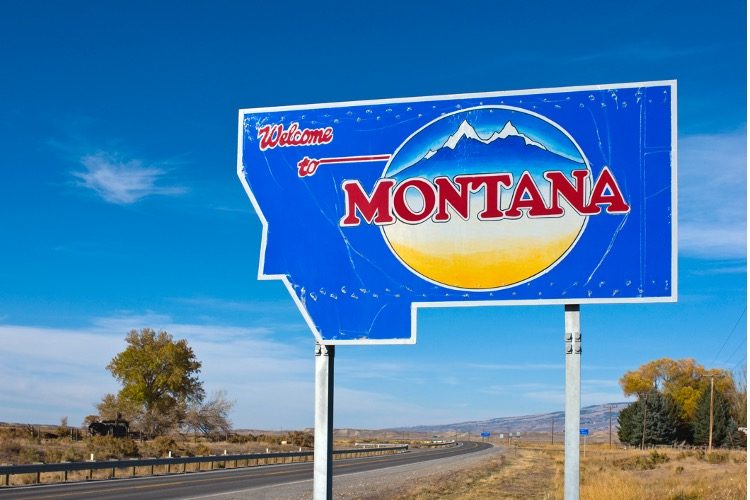
The presence and influence of Mexican drug cartels is far more than a mere border issue. These transnational criminal organizations have a strong footing in the American heartland, infesting small towns with fentanyl and setting up operations on Indian reservations.
As reported by NBC News, the Sinaloa Cartel has pushed into Montana, where it is able to sell its fentanyl pills at 20 times the price they would go for in urban border areas.
Chad Anderberg, a Montana Division of Criminal Investigation agent, told the outlet of a former Mexican police officer working for the Sinaloa Cartel who was arrested outside Butte, Montana, upon being discovered to be in possession of two pounds of pure methamphetamine (an amount authorities said could supply a population of 2,150 for a number of days).
The arrest of the former Mexican policeman, Ricardo Ramos Medina, exposed a ring responsible for transporting at least 2,000 pounds of meth and 700,000 fentanyl-laced pills into Montana from Mexico over a period of three years.
“Why Montana?” said Anderberg. “It boiled down to money. He could make so much more profit from drugs he sold here than in any other place.”
Moreover, Montana’s Indian reservations have become a hotspot of cartel activity. According to NBC:
Some areas of the state have become awash with drugs, particularly its Indian reservations, where tribal leaders say crime and overdoses are surging.
On some reservations, cartel associates have formed relationships with Indigenous women as a way of establishing themselves within communities to sell drugs, law enforcement officials and tribal leaders said. More frequently, traffickers lure Native Americans into becoming dealers by giving away an initial supply of drugs and turning them into addicts indebted to the cartels.
Enforcing measures against the drug trade poses a particular challenge in a state as big as Montana. Law enforcement faces difficulties in patrolling the extensive open areas, and tribal police forces on Indian reservations often contend with inadequate funding and limited staffing. In one instance, members of a tribe on a reservation formed a vigilante group as a last-ditch effort to combat crime associated with drugs.
However, over the past few years, Montana officials have made some progress. The apprehension of the former Mexican police officer was a pivotal moment in a significant operation that implicated 21 additional individuals involved in a drug-trafficking network linked to the Sinaloa cartel, considered one of the most powerful criminal organizations globally. Furthermore, since last April, a total of 26 suspects have faced charges in a separate federal drug case, which includes individuals associated with Mexican cartels and members from two American Indian tribes.
The cartels’ involvement in Montana goes back decades and has been increasing by the year. Initially, locally produced methamphetamine was Montana’s predominant drug issue. However, in the mid-2000s, the prevalence of meth houses in the Midwest and northern states declined due to new regulations restricting access to the drug’s precursor chemicals. The cartels viewed this as their opportunity to leap into the market and began inundating the United States with an exceptionally potent variant of meth, placing particular emphasis on the American Indian demographic.
Montana might be a long way from Mexico, but the work is more than worth it to the cartels. A Mexican-made counterfeit fentanyl pill sells for $3 to $5 in places such as Seattle or Denver, but in remote areas of Montana, that same pill goes for up to $100.
Single women on reservations are reportedly some of the cartels’ most common targets for recruitment into their operations. And reservations in general serve as an ideal breeding ground for the drug trade due to the complicated legal quagmire surrounding them. Indian reservations function as sovereign nations, limiting the jurisdiction of local law enforcement unless an agreement with the tribe is established. Even with agreements in effect, there are often restrictions preventing local and state authorities from apprehending tribal members. Additionally, tribal police officers are generally prohibited from making arrests of individuals who are not part of the reservation community.
The results of the illicit drug trade have been deadly for the communities caught in the middle of cartel business. From 2017 to 2020, Montana witnessed a nearly threefold increase in its opioid overdose death rate, surging from 2.7 deaths per 100,000 residents to 7.3. In the 10 years leading up to 2020, the overdose death rate among American Indians surpassed that of white Montana residents, standing at more than double, as noted by Montana’s Department of Health and Human Services.
In the face of the growth of drug sales and drug use, tribal governments have placed the blame on the federal government. The Northern Cheyenne tribe initiated a federal lawsuit against the Interior Department and its Bureau of Indian Affairs in 2022. According to the lawsuit, the federal government violated its responsibility to ensure the safety of reservation residents by not supplying sufficient law-enforcement officers to keep the area secure.
Stacy Zinn, a former DEA agent who spent 23 years with the agency, told NBC News, “We are fighting this problem standing on one leg, and half the time we’re handcuffed.”




